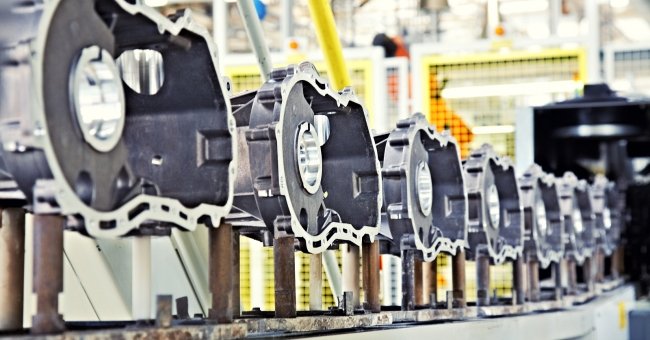One of the visible faces of this is the steep increase in the number of new manufacturing robots acquired. This is true for almost every industry. But it is truly overwhelming in the automotive industry, not necessarily in the OEM’s, already highly robotized, but in the suppliers of automotive components.
Being clear that this sector is strongly investing in digitalization technologies, what is the Portuguese sector of automotive components doing? This is probably one of the best positioned groups to take advantage of this Industry 4.0 revolution in the country.
A PROXY TO ASSESS THE EVOLUTION OF THIS SEGMENT: NUMBER OF ROBOTS
According to the International Federation of Robotics in its 2015 World Robot Statistics and as shown in the chart below, 2014 recorded, by far, the highest volume of new industrial robots, reaching new 229.000 units acquired.
The automotive industry, the most important customer of industrial robots, followed by the electrical/electronics industry, is progressing with its investments in industrial robots with the value in 2014 reaching 98,900 new robots, 43% more than in 2013, with an average increase of 27% between 2010 and 2014.
What is interesting in this report is the fact that in 2014, the majority of the robots were not sold to OEM’s, which represent only one fourth of these units, but to automotive part manufacturers, most of them supplier of automotive electronic parts.
In countries like US, this is enabling car manufacturers and suppliers to feed the world's largest domestic market and to produce the greatest number of cars and light commercial vehicles after China. The USA is witnessing very intense investment in the technical renewal of its domestic manufacturing, aimed at improving competitiveness and partly at regaining capacities from abroad (source: www.worldrobotics.org)
As referred in the same report, the primary drivers of industrial robot investments among automotive suppliers are new quality standards, more energy efficient production and new materials.
Robots are just one of the visible areas of the digital transformation happening in the automotive components sector. It is easier to use this, since there is some meaningful and quite consistent data available, unlike what happens in other areas (e.g. try to find out how much the MES market is worth and what has been its recent evolution and you can grasp how difficult it is to get reliable data in this manufacturing IT area). But the transformation in the automotive industry is happening in many different areas....
To read the full blog article and see more pictures click here
This article by Francisco Almada Lobo, CEO of Critical Manufacturing was published on 30 March 2016 on LinkedIn Pulse series.

